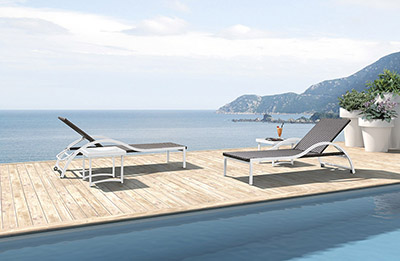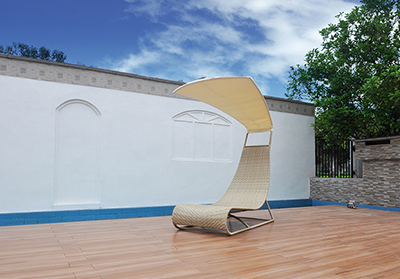From the analysis of the formation mechanism and inspection method of printing adhesion fastness, we can better understand the ways to improve the printing adhesion fastness (mainly discuss the polyolefin film).
1. Raw material selection
In the production of plastic films, raw materials containing no or less plastic additives should be selected. We can judge the condition of containing additives based on the technical data of resin grade, performance and use.
When it is necessary to use raw materials containing more additives, they should also be blended with raw materials without additives.
The reason for this choice is because the additives that are folded out during the forming process and placement process will form an oil film and weaken the adhesion of the ink to the film.
2. Raw material modification
1) Blending modification: The blending of polyolefin and polymers with good printing performance to improve printing performance is a newly developed and attractive method. For example, the modification of high-density polyethylene with polyacrylic resin greatly improves the adhesion of ink to polyethylene. When 5-20% polymethyl methacrylate (PMMA) is incorporated into it, the above-mentioned adhesion is increased by seven times. Another example is when using chlorinated polyethylene with more chlorine content to blend, only a small amount can significantly improve the adhesion between polyethylene and oil black. When blended with 5% CPE-55, the adhesion between the blend and ink is three times higher than that of pure HDPE. According to related reports, some plastic polymer processing aids (rheology modifiers, etc.), in addition to improving yield and eliminating melt fracture, also have the role of improving printing adhesion.
The reason why the addition of polyacrylic resin or chlorinated polypropylene can improve the printability of HDPE is based on their poor compatibility with HDPE. When it forms a dispersed phase in the blending system of HDPE as the matrix and sits on the surface of the film, obviously Conducive to bonding with ink.
2) Grafting modification: Grafting modification uses radiation and other methods to cause the polyolefin to undergo a grafting reaction, so that the polyene macromolecular chain is polarized and the wettability of the material to the ink is improved. Such as maleic anhydride or acrylic acid grafting modified linear density polyethylene improved its printability.
3) Other methods of modification: If a small amount of maleic acid or its anhydride is added to polyolefin, it can also greatly improve the printing ink fastness of polyolefin film.
3. The ink also plays a decisive role in the fastness of printed ink layers. Of course, the corresponding ink should be used for different substrates. For example, nitrocellulose resin ink can be used for cellophane; chlorinated polypropylene resin ink can be used for polypropylene film; polyamide resin ink can be used for polyethylene film, etc.
In order to adjust the viscosity and volatilization speed of ink in production, we often add a certain amount of solvent. Two issues should be noted here:
1) When adding a solvent, try to use a solvent with a lower surface tension in order to reduce the surface tension of the entire ink system, thereby improving the wettability of the printed film.
2) When the working solid content is too high, the wetting effect will be correspondingly lower, which will affect the ink fastness. Conversely, if too much solvent is added, the effective components that the ink adheres to the film will be relatively reduced, and the fastness will also be reduced.
In order to solve the contradiction between the fastness of the ink layer and the volatilization speed of the ink, a resin (rubber) corresponding to the ink or other suitable compatible adhesive resin or rubber can be added to the thinner or ink. This can also improve the fastness of the ink layer to a certain extent. At the same time, if the ink is left for too long or mixed with impurities, the connection material will be deteriorated, so you should try to use fresh ink or replace the deteriorated ink in time.
4. Surface treatment
From the analysis of the ink adhesion fastness mechanism, we can know that further modification of the ink and film can play the role of improving the ink adhesion fastness, but for cost considerations, the commonly used method is to surface the printed film deal with.
For films such as polyvinyl chloride, cellophane, polyester, nylon, etc., due to their large surface tension, they can be printed directly when the requirements of printed products are not high (in fact, due to the increase in customer requirements in recent years, these materials are also To be treated), and the surface tension of untreated polyolefin film is very low, such as PE is 31 dynes, PP is 29 dynes, in order to print it should be increased to 38 dynes 2, which requires the film Surface treatment.
Plastic surface treatment methods include flame treatment, chemical treatment, solvent treatment and corona treatment, but corona treatment method is widely used for polyolefin film. The following uses polyethylene film as an example to analyze the reasons why corona treatment improves ink fastness.
1) Due to ionization, the oxygen in the air generates ozone, which oxidizes the surface. The molecular chain of the surface polyethylene may generate terminal P active electrodes such as carbonyl, carboxyl, and hydroxyl groups. Nitrogen in the air is also ionized into a plasma and interacts with polyethylene molecules to generate amine-type genes on the polyethylene molecular chain and can continue to be oxidized to produce a series of nitrogen-containing compounds. As a result, the polarity of the molecules on the surface of the polyethylene film is enhanced and the wettability is improved, thereby improving the adhesion of the ink.
2) Eliminate some invisible oily substances (impurities, additives, oligomers, etc.) deposited on the film surface, so that the ink can be in close contact with the film.
3) Due to the impact, the surface is roughened and the mechanical wedge head is realized.
4) As the surface of the film is heated, the activity of the molecular chain is increased, that is, the surface activity is increased.
5) Under the action of a high-voltage electric field, the non-conductive plastic film displaces the charge in the molecule, and forms an induced charge on the surface. The presence of this induced charge can generate a pooled attraction with polar ink molecules. This pair of printing inks The improvement of layer fastness also has a certain effect.
Pay attention to the following issues when performing corona treatment:
1) After corona treatment, it should be used in a short time. Otherwise, if the polar group is combined with water molecules in the air, it will reduce the wettability and destroy the adhesion of the printing ink layer. Therefore, qualified films should be stored in a dry, lower temperature warehouse; re-inspect and test when used.
2) For the cold film, a larger power electronic surface treatment is required. The cold film should be pre-heated with tungsten iodine infrared before processing.
3) If only one-sided printing is needed, only one-sided corona treatment will be performed. Otherwise, it is easy to cause blocking problems after printing.
4) Under high temperature conditions, if the treatment time is too long, the adhesion tends to decrease. This may be due to decomposition products on the surface, forming a "weak boundary layer".
Common plastic film wetting tension (untreated) unit mN / m
Name Wetting tension
Polyethylene 31
Polyester 43
Polypropylene 29
Nylon 46
PVC 39
Polyvinylidene chloride 40
Celluloid 42
Outdoor Beach Chair brings you a wonderful lounge time at seaside or poolside.The materials synthetic PE rattan,aluminium frame and waterproof cushion are resistant to difference weather conditions and easy to maintain.
Outdoor Beach Chair is crafted from rattan wicker weaved into an aluminium frame. This combination help make this chair durable and comfortable all at once. The adjustable backrest allows you to adjust to different positions so that you can relax on the patio or by the pool.
Features
· For outdoor and indoor use
· High quality rattan plait
· Suitable to all weather conditions
· Easy to maintain
· Matches any outdoor decor
· Quick to assemble
· Adjustable backrest
Maintenance tips
· Do not use any abrasive cleaning agents for cleaning
· Clean the chaise lounge with a damp, soft cloth (you may use a mild cleaning agent) and wipe it dry afterwards
· In case of ceaseless heavy rain or during the winter, the furniture should be stored inside or have a protective cover on it
Outdoor Beach Chair is ranged in different style: Rattan Chair,Sing Mesh Chair,Aluminium Powder Coat Chair.Single and double chairs are available for option.




If you have any questions, please contact with us directly. Outdoor Sofa Furniture are produced
by Golden Eagle Outdoor Furniture With High Quality and Good Appearance. Welcome you can visit our Factory.For any inquiry,Please send mail directly to us.
Rattan Beach Chair,Sun Lounger Beach Chair,Pool Beach Chair,Chaise Lounger Beach Chair
Golden Eagle Outdoor Furniture Co., LTD. , https://www.geleisurefurnitures.com